Crossover Crossroads: Bedlam Theatre and the Bryant Lake Bowl
The BLB and Bedlam Theatre are now hubs for a Fringeful of performers and indie theater lovers in Minneapolis. Jay Gabler sits down with Bedlam cofounder Maren Ward and BLB's Kristin Van Loon to get the back story on these venues' rise in the local scene.
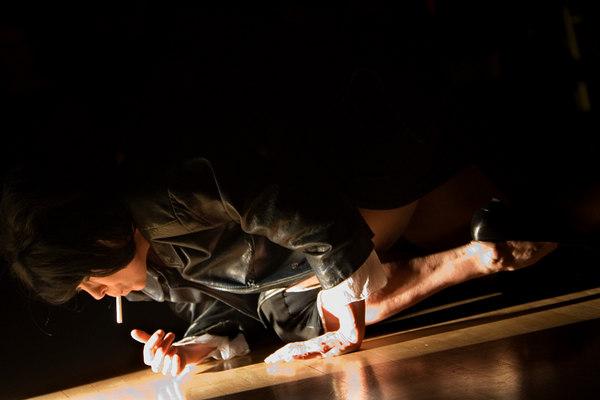
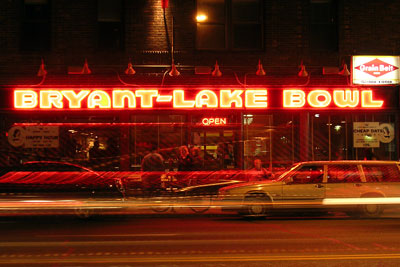


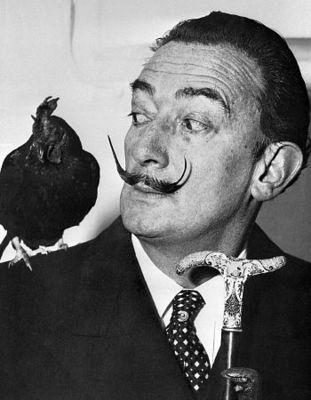
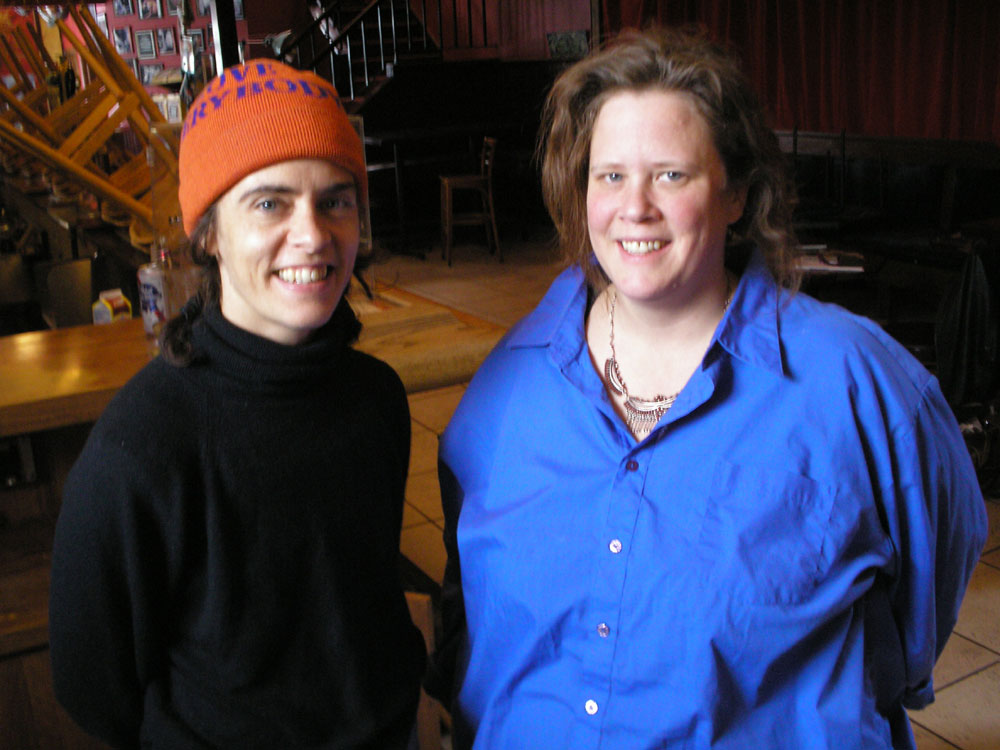
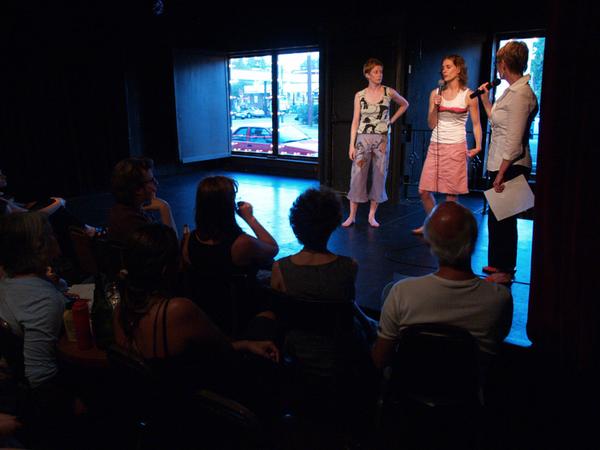
DYLAN AND VAN RONK HAD GERDE’S FOLK CITY. Pollock and de Kooning had the Cedar Tavern. Scrimshaw and Serrand have Bedlam and the BLB.
In a twist of fate no playwright would dare try to get an audience to believe, Maren Ward and Kristin Van Loon–two high school classmates from Winnetka, Illinois–are calling the shots at these two hubs of independent theater in Minneapolis. Ward is one of two artistic directors at Bedlam Theatre, and Van Loon runs the theater at the Bryant-Lake Bowl. On any given evening at either venue, diners and theatergoers are apt to find themselves rubbing elbows with a Fringeful of local actors, playwrights, directors, and producers. One afternoon in early March, Ward and Van Loon sat down together at Bedlam to talk about how these two unlikely spots came to be playmakers’ Meccas.
Both Bedlam and the BLB trace their origins to the first year of the Clinton Administration. 1993 was the year that entrepreneur Kim Bartmann reopened an ailing bowling alley at the corner of Bryant and Lake in Uptown, and it was also the year that Macalester College alums Maren Ward and John Bueche–along with several of their peers–founded Bedlam Theatre in the heart of Minneapolis’s West Bank neighborhood.
“At first,” remembers Ward, “our space was just a factory, a build space for productions we’d mount elsewhere. Then we started to host parties for our friends, and we began to get a reputation as a place to go.” Bedlam’s “romps” were cabaret parties in a festive atmosphere, including liberal libation on a BYOB basis. In 2000, Bedlam for the first time mounted an official, public production in its West Bank space. “The space gradually became more theater and less factory,” says Ward, “until we just didn’t go anywhere else. People got into the habit of bringing beer or donating to a keg fund, and there was this evolving social atmosphere.”
In the meantime, the Dar Al-hijrah mosque had moved into an adjacent space in the building; eventually the mosque acquired the entire building and made plans to expand into the Bedlam space. “They were very good about giving us notice and letting us look for a new space,” says Ward. “As we started our search, it was clear to us that we needed to remain in the neighborhood. We wanted a space where we could grow as an organization.”
The perfect space-a sprawling building full of nooks and crannies, with a spectacular rooftop view of downtown-opened up a couple of blocks away, but it was only available on a year-to-year lease. “It was a big organizational leap,” says Ward, “but we didn’t hold back. We put in a lot of sweat.” In January 2007 Bedlam opened at its current home, which was an immediate success. “It’s taken off in a way we wouldn’t have predicted,” says Ward.
At the Bryant-Lake Bowl, on the other hand, it was part of Bartmann’s plan from the beginning to create a multiuse venue that would create the potential for crossover. As part of Bartmann’s renovation, the BLB Theater was created from a space behind the bowling alleys which formerly served as a gaming room. (Bartmann was then owner of Café Wyrd, which she later converted to Barbette; she is also owner of the new Red Stag Supperclub in Northeast Minneapolis.) “Lyn-Lake looked really different in 1993,” says Van Loon. “People thought Kim was crazy, but the BLB has really been an anchor for the revitalization of that neighborhood.”
______________________________________________________
Bedlam and the BLB are unique among Twin Cities venues in their successful creation of opportunities for cross-fertilization among small companies and audience members, who are as likely to come for the bowling or the pierogi as for the theater.
______________________________________________________
Van Loon says that Bartmann and the theater’s first director, Danny Schmidtz, “had a real vision for making the theater accessible and artist-friendly. We’ve always had a simple policy: we book the acts and split the take with them, usually 50-50.” The theater hosted cabaret-style music shows and sketch comedy acts, many of whom moved back and forth between Bedlam and the BLB. Van Loon performed at both venues with Hijack Dance, a company she still runs. “The BLB hosted Katie’s Cabaret, Martini & Olive, the Scrimshaw Brothers…I remember when Hijack followed the Scrimshaw Brothers one night at Bedlam. They’d smashed bottles all over the stage, and here we came, barefoot dancers!”
Hijack was the first dance company to perform at the BLB, and Van Loon describes the company’s sold-out month-long run in the space as a “classic BLB experience.” Van Loon took over as director of the BLB Theater in 2004. “It’s been a real model for a theatrical venue that’s accessible to both artists and audiences,” she says. “My interest is in stretching the kind of performances that appear there, but honestly, it’s been stretching all along. Now we host everything from the Chekhov Festival to Café Scientifique to Books & Bars to Dykes Do Drag. Cinema Lounge has been there for the full 15 years.”
Ward and Van Loon agree that Bedlam and the BLB are unique in the Twin Cities as theatrical venues that create opportunities for cross-fertilization among small companies and audience members, who are as likely to come for the bowling or the pierogi as for the theater. “There’s this dream of a crossover audience,” says Ward, “where theater is discovered by people who wouldn’t normally look for it.
We try to create as many ways as possible for people to become involved with theater, and for people involved with one genre of performance to try another.” (In this vein, Ward and her colleagues are developing a program called “Switch Niches, Bitches!”)
“That kind of crossover doesn’t happen as often as we’d like,” agrees Van Loon, “but to the extent it does, it tends to happen at Bedlam and the BLB.”
It’s a happy coincidence that the women running these two venues are friends from high school–in another state, no less–but it is indeed a coincidence. Ward came to Minnesota to attend Macalester, whereas Van Loon made her way to the Twin Cities because of the area’s reputation for supporting independent theater and dance. Both women found themselves involved with the same energetic, sympathetic community of like-minded artists, and they’ve both stayed.
“We should tell our alumni magazine,” Ward says. Then, she pauses. “Do we even have an alumni magazine?”
About the author: Jay Gabler is arts editor at the Twin Cities Daily Planet.